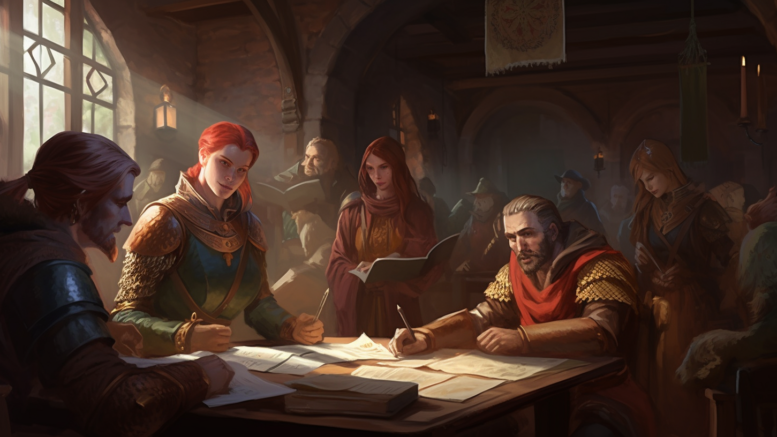Role-playing games like D&D 5e and Pathfinder 2e are incredibly fun and engaging, but they can also be complex and require a lot of information to keep track of. Whether you’re a player or a game master, taking good notes is essential to keeping track of important details and ensuring that everyone is on the same page. In this blog post, we’ll provide you with some tips on how to take good notes for role-playing games.
Keep a separate notebook for your game
One of the best ways to take good notes is to keep a separate notebook dedicated solely to your game. This notebook should be used exclusively for jotting down important details related to your game, such as character names, locations, and plot points. By keeping all of your notes in one place, you’ll be able to quickly and easily reference them during your game.
Use shorthand
During your game, there may be times when you need to quickly jot down notes. In these situations, it’s helpful to use shorthand to save time and space. For example, instead of writing out “Castle Ravenloft,” you could simply write “CR.” Similarly, instead of writing out a character’s full name, you could use their initials.
Use color coding
Color coding can be a great way to keep your notes organized and easy to read. For example, you could use one color for important plot points, another for character names, and another for locations. This will make it easy to quickly find the information you need during your game.
Use symbols and drawings
In addition to shorthand, symbols and drawings can also be helpful for taking notes during your game. For example, you could draw a small sword or shield next to a character’s name to indicate that they are a warrior. Similarly, you could draw a small house next to a location’s name to indicate that it is a safe place to rest.
Use headings and bullet points
Another way to keep your notes organized is to use headings and bullet points. For example, you could use a heading like “Plot Points” to indicate where you’ve written down important plot details. Underneath that heading, you could use bullet points to list out each plot point.
Summarize important information
It’s important to remember that you don’t need to write down every single detail during your game. Instead, focus on summarizing the most important information. For example, instead of writing out every word of a conversation between two characters, you could simply write down the main points that were discussed.
Review your notes after the game
After your game is over, take some time to review your notes. This will help you to remember important details and ensure that you didn’t miss anything important. You can also use this time to update your notes with any new information that you learned during the game.
Takeaway Examples:
Let’s say you’re playing D&D 5e, and your group is exploring a dungeon. Here’s an example of how you could take notes during the game:
- Keep a separate notebook for the game.
- Use shorthand: DR (dungeon room), HP (hit points), DM (dungeon master).
- Use color coding: green for dungeon rooms, red for traps.
- Use symbols and drawings: draw a skull next to a trap, a chest next to treasure.
- Use headings and bullet points: “Dungeon Rooms” with a bullet list of each room number and description.
- Summarize important information: write down the name of each monster encountered, their HP, and any special abilities.
- Review your notes after the game: update the “Dungeon Rooms” section with any new rooms discovered, and add any new monsters encountered to the “Monsters” section.
In Pathfinder 2e, here’s an example of how you could take notes during the game:
- Keep a separate notebook for the game.
- Use shorthand: AC (armor class), HD (hit dice), DC (difficulty class).
- Use color coding: blue for spells, yellow for skills.
- Use symbols and drawings: draw a wand next to a spell, a lock next to a locked door.
- Use headings and bullet points: “Skills” with a bullet list of each skill and character’s rank in it.
- Summarize important information: write down the name and type of each spell cast, as well as any skill checks made by the characters.
- Review your notes after the game: update the “Skills” section with any new skills learned or improved, and add any new spells learned to the “Spells” section.
Please keep in mind that these tips work for any game, and remember taking good notes during your role-playing game can help you stay organized, remember important details, and ensure that everyone is on the same page. By using shorthand, color coding, symbols and drawings, headings and bullet points, summarizing important information, and reviewing your notes after the game, you’ll be well on your way to becoming a master note-taker. Happy gaming!

Be the first to comment on "How to Take Effective Notes During Your Next Role-Playing Game"